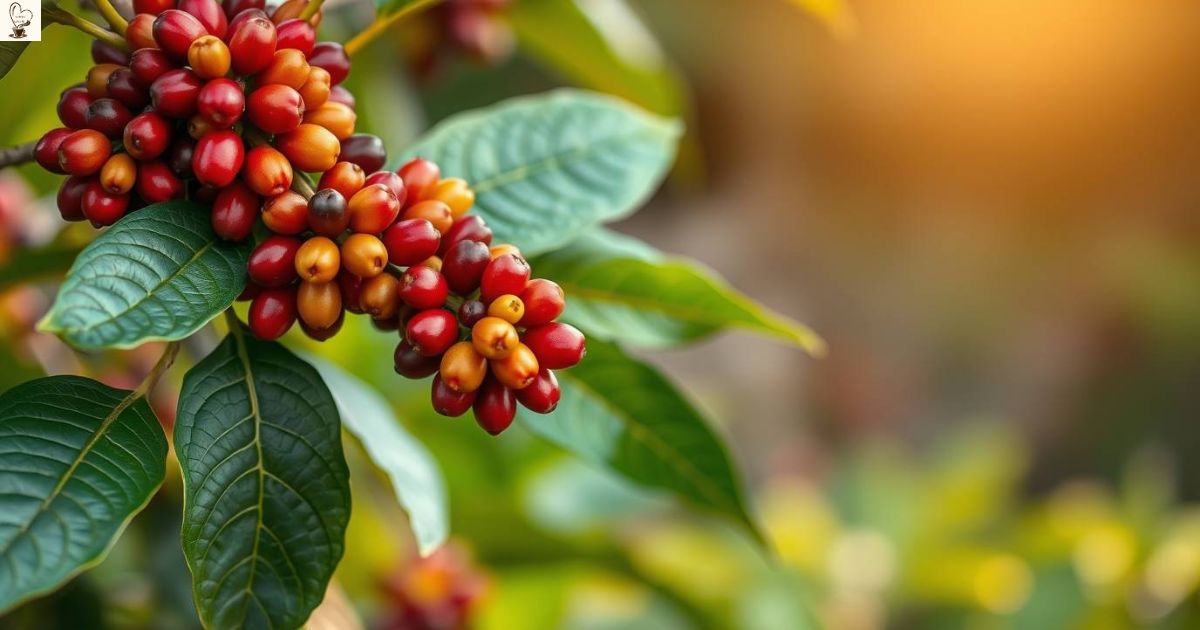How to Grow Coffee Beans Like You’ve Always Dreamed in 2025
Have you ever dreamed of drinking coffee made from beans you grew yourself? Imagine walking into your backyard, picking fresh coffee cherries, and brewing a cup of your homegrown coffee. It sounds like something only coffee experts could pull off, right? Well, think again!
Growing coffee at home is more achievable than you might think. By 2025, you could be sipping on the freshest cup of coffee you’ve ever had—and the best part? It’s all from your plants!
The idea of growing coffee beans might seem a bit intimidating at first, but trust me, it’s a journey worth embarking on. You don’t need to be a gardening expert to get started; just follow along, and soon enough, you’ll be brewing coffee from your backyard (or windowsill!).
Understanding the Basics of Coffee Growth
Before diving into the specifics of how to grow coffee beans, let’s first understand what makes coffee plants thrive. Coffee is grown from the seeds inside the coffee cherry, and each stage of its growth requires specific conditions. Coffee plants naturally thrive in warm climates, typically found in tropical and subtropical regions.
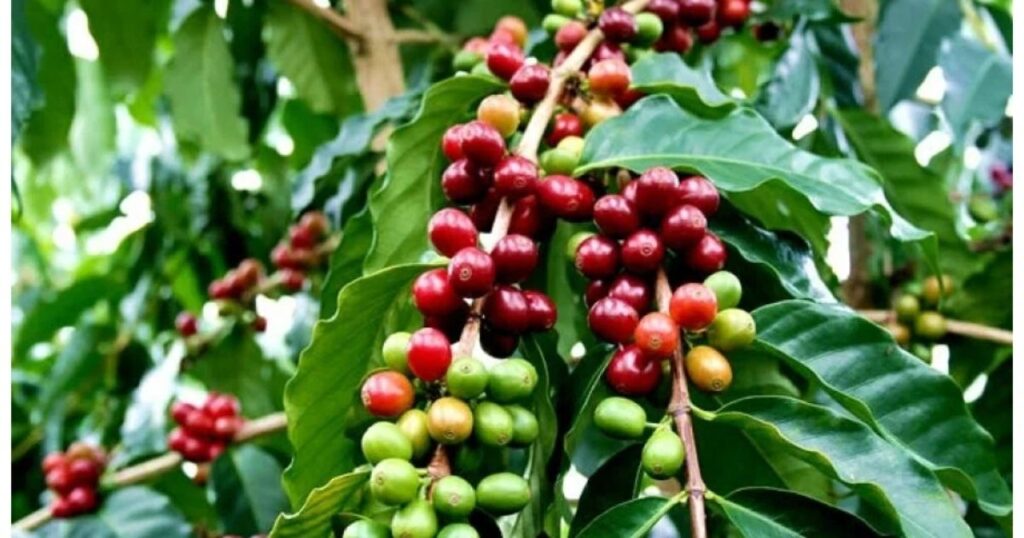
However, with the right care and attention, you can adapt them to different environments, making it possible for anyone to learn how to grow coffee beans, even in non-tropical areas.
Growing coffee is a long process—don’t expect to pick your cherries next week! It takes time, dedication, and the right environment to grow healthy plants. However, once you know the basics, you’ll see how satisfying it can be to nurture your very own coffee plant.
Ideal Growing Conditions
Coffee trees require specific growing conditions to thrive. They prefer areas with temperatures ranging from 60°F to 70°F (15°C to 24°C), ideally, and need plenty of indirect sunlight. While they need warmth, too much direct sun can scorch their leaves.
Humidity is also a key factor, as coffee plants naturally grow in humid environments. If you’re growing coffee indoors, using a humidifier or placing the plant near a naturally humid area like a bathroom can be beneficial.
You’ll need to create a micro-climate that suits the plant’s needs, but don’t worry—you can grow coffee at home with a bit of effort!
Choose the Right Coffee Variety
There are many different varieties of coffee beans, but the two main types are Arabica and Robusta. These varieties differ not only in flavor but also in how they grow and how much care they need.
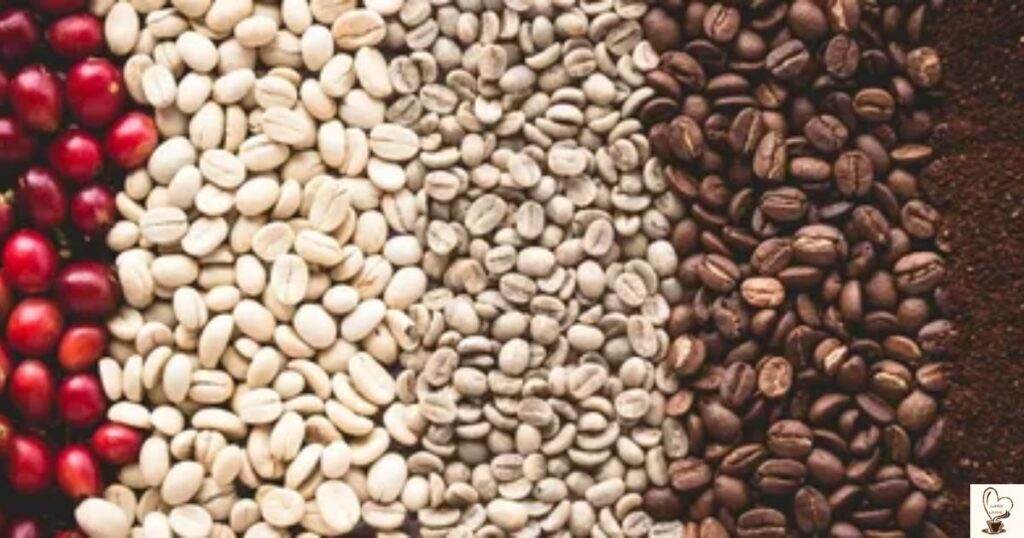
Where Do Coffee Beans Come From?
Coffee beans come from the seeds inside the coffee cherries, which grow on coffee trees. These trees thrive in tropical and subtropical regions, primarily in countries like Brazil, Colombia, Ethiopia, and Vietnam. The beans are harvested once the cherries ripen, usually after several months of growth.
The two most common types of coffee beans are Arabica and Robusta. Arabica beans are known for their smooth and complex flavor. Robusta beans, on the other hand, are stronger, more bitter, and have higher caffeine content.
When learning how to grow coffee beans, your choice of variety depends on the flavor you prefer and the growing conditions you can provide. Arabica thrives in cooler climates, while Robusta is more heat-tolerant.
Arabica Coffee: Smooth and Flavorful
Arabica beans are the gold standard in coffee. Known for their smooth, mellow flavor, they are often preferred by high-end coffee lovers. Arabica coffee trees require cooler temperatures, which is why they tend to do better in regions with mild climates.
They’re slightly more delicate and need a bit more care in terms of watering and sunlight but reward you with a rich flavor that’s well worth the effort.
Robusta Coffee: Stronger and More Caffeine
Robusta, on the other hand, is more robust and can handle a wider range of growing conditions. These plants are less finicky and can tolerate hotter climates.
Robusta coffee beans tend to have a stronger, more bitter taste and contain more caffeine, making them popular for those who prefer a stronger brew. While Robusta is hardier, Arabica is generally seen as the superior choice for quality coffee.
Find the Perfect Spot for Your Coffee Bean Plant
Coffee plants need careful placement to grow strong and healthy. If you want to know how to grow coffee beans, location is key. Coffee trees like warmth, humidity, and indirect sunlight. Avoid placing them in direct sun. The right spot will help your plant thrive.

Outdoor vs. Indoor Coffee Plants
If you live in a warmer climate, growing coffee beans outdoors is ideal. Find a spot with plenty of indirect sunlight to ensure healthy growth. For those in cooler climates, you can still learn how to grow coffee beans indoors. Choose a bright, sunny area, but keep the plant away from direct sunlight to prevent scorching its delicate leaves.
If you’re growing your coffee indoors, a grow light can be a helpful addition to ensure your plant gets enough light. Keep in mind that coffee trees also need space to grow, so choose a location with enough room for their roots to spread out.
Planting Your Coffee Beans: The First Step to Growing Your Own
The next step is planting your coffee! You have two options here: planting seeds or starting with a young coffee plant. Both methods have their pros and cons, but either way, you’re on your way to growing your beans.
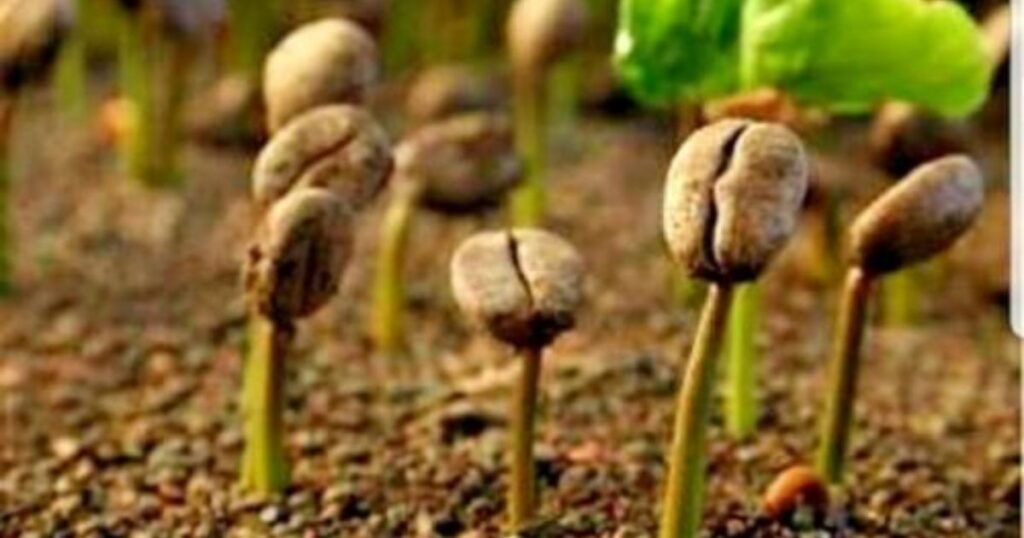
Starting from Seeds
Planting from seed is a slower method, but it’s a rewarding process. Start by soaking the seeds in water for 24 hours before planting them in rich, well-draining soil. Use a pot with drainage holes to avoid root rot. Plant the seeds about 1 inch deep, then cover them lightly with soil. Keep the soil moist but not waterlogged.

It can take several weeks for coffee seeds to germinate, so be patient. Coffee seeds need a warm, humid environment to sprout, so consider placing your pot in a warm spot, like on top of a refrigerator or near a heater.
Starting with a Young Coffee Plant
If you’re short on time and patience, starting with a young coffee plant is a faster route to homegrown coffee. Young plants are available from various nurseries or online garden stores. Simply transfer your plant into a larger pot with well-draining soil, and water it regularly.
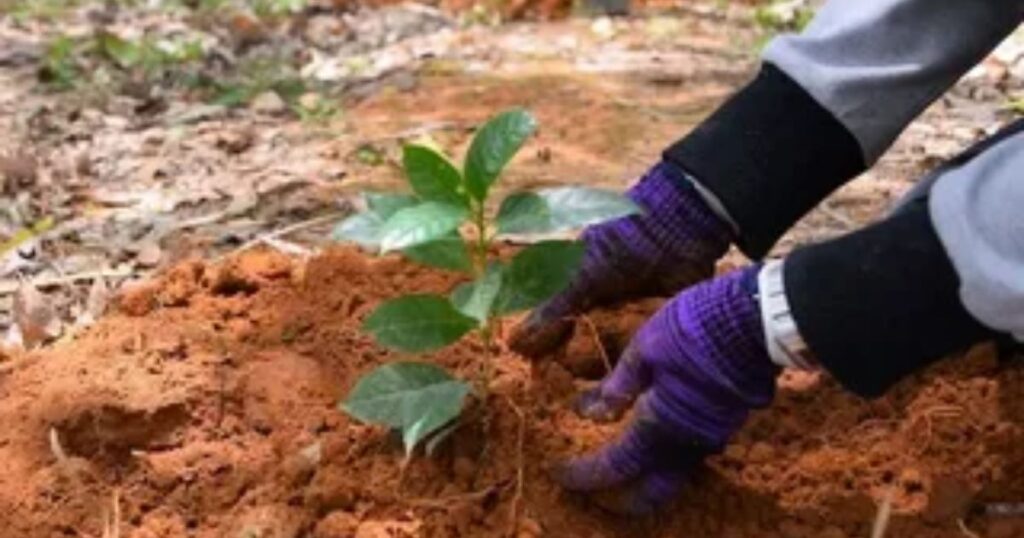
Ensure that your plant receives indirect sunlight, and avoid direct exposure to harsh afternoon sun.
Coffee Plant Care: How to Help Your Coffee Grow Strong
Once your coffee plant is settled, regular care is crucial to its growth. Knowing how to grow coffee beans involves consistent watering, feeding, and pruning. Coffee plants need their soil to stay moist but not soggy. Regular feeding with a balanced fertilizer will help them thrive. Pruning dead leaves and branches encourages healthy growth and better bean production.
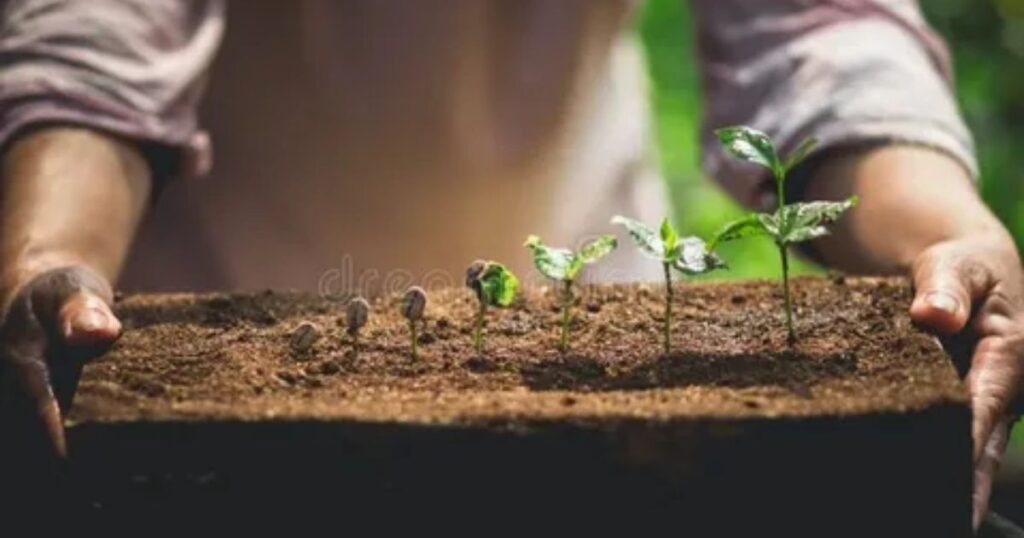
Watering Your Coffee Plant
Coffee plants like their soil to remain consistently moist, but not soggy. Over-watering can lead to root rot, so make sure your pot has good drainage. During the growing season, typically spring and summer, water the plant more often, but during fall and winter, reduce watering slightly.
Fertilizing Your Coffee Plant
Feed your coffee plant with a balanced fertilizer once every 4-6 weeks during the growing season. Coffee bean plants aren’t heavy feeders, so avoid over-fertilizing, as this can burn the roots and harm your plant.
Pruning for Health and Growth
Pruning is an essential part of coffee plant care. Remove dead leaves and branches regularly to keep the plant looking tidy. Pruning also helps your plant focus energy on producing strong, healthy growth rather than spending energy on damaged or unnecessary branches.
Patience Is Key: How Long Does It Take?
Growing coffee takes time, and that’s part of the magic! Coffee plants take 3-4 years to fully mature and produce cherries. Even after they bloom, the cherries can take another 6-9 months to ripen.
Signs Your Coffee Cherries Are Ready
Once your cherries turn a deep red color, they are ready for harvesting. Be patient, as premature cherries can affect the taste of your final brew. When the cherries are ripe, gently pluck them from the plant. The process of harvesting and processing the cherries can be tedious, but the results are worth it!
Harvesting and Processing: Coffee Farming
This process is an essential part of learning how to grow coffee beans. You’ll need to remove the outer layers of the cherries to reveal the coffee beans inside. After you’ve harvested your cherries, the next step is extracting the beans.
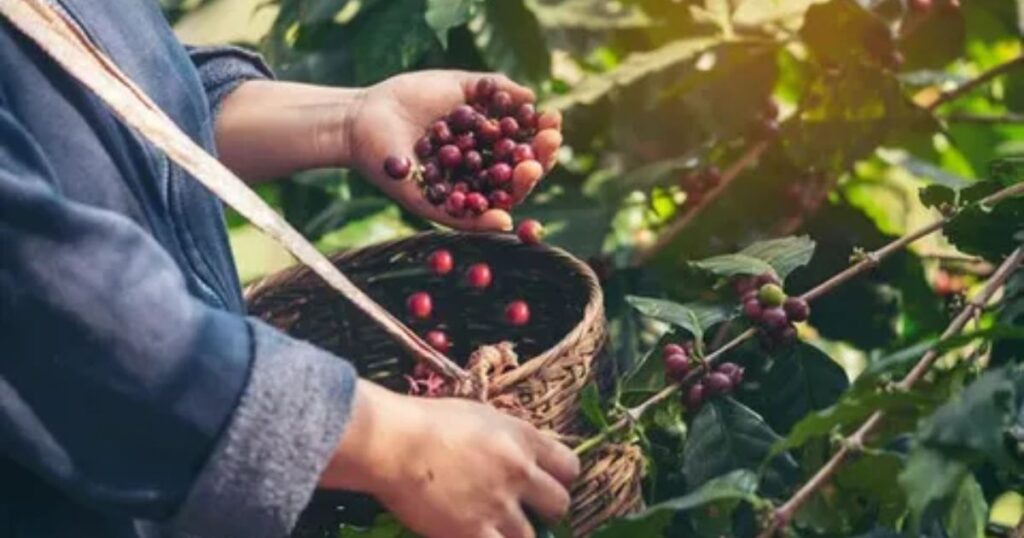
Extracting the Beans
Once you pick the cherries, remove the outer skin to reveal the beans. This is done using wet or dry processing. Wet processing involves soaking the cherries to remove the skin. Dry processing simply dries the cherries before peeling off the skin. Both methods work, so choose the one that suits you best.
Drying the Beans
Lay the beans out in a dry, warm place for several days, turning them frequently to ensure even drying. Once fully dried, the beans are ready to roast.
Roasting Your Coffee Beans: The Final Step
Roasting your coffee beans is where the magic happens! You can roast your beans at home using a small coffee roaster or even a pan on the stove.
Roasting Techniques
Roast your beans according to your flavor preferences—lighter roasts preserve the natural flavor of the bean, while darker roasts bring out richer, bolder notes. Freshly roasted beans should be used within a few weeks for the best flavor.
Experimenting with Roasts
Feel free to experiment with different roasting times and techniques to find your perfect brew. Some coffee lovers prefer a light roast, while others like a rich, dark brew. Don’t be afraid to play around and discover what works for you!
Ready to Grow Coffee Beans Yourself?
Are you excited to learn how to grow coffee beans? With a small balcony or a spacious backyard, there’s something truly special about brewing coffee from beans you’ve grown yourself. It’s a rewarding experience that creates a deeper connection to your coffee. Once you see your plants thrive, you’ll appreciate every sip even more.
Growing coffee beans takes time, but it’s worth the wait. By 2025, you could be sipping on the freshest, most personal cup of coffee you’ve ever had. Take the first step today, and your future self will thank you for it!
Call to Action: Ready to start growing coffee beans? Dive into your new coffee adventure and keep us posted on your progress. If you loved this post, leave a review and share it with fellow coffee lovers. Let’s grow some amazing coffee together!
FAQs
How to Grow Coffee Beans Yourself?
You can grow coffee beans yourself. It does take patience, as coffee plants take time to mature. With the right care, you can enjoy homegrown coffee in a few years.
Are Coffee Beans Hard to Grow?
Growing coffee can be challenging as it requires a temperate climate and long-term care. It’s a labor-intensive process that demands attention to detail. Those committed to the effort will be rewarded with homegrown coffee.
What is the Lifespan of a Coffee Tree?
A coffee tree can live for 20 to 30 years with proper care. Growing coffee requires a commitment to long-term, labor-intensive care. It’s essential to be patient and dedicated to nurturing the tree throughout its lifespan.
Which Country is the Biggest Producer of Coffee?
Brazil is the largest producer of coffee in the world. The country produces millions of bags of coffee each year, primarily Arabica and Robusta varieties.
What is the best Climate for Coffee Growing?
The best climate for coffee growing is a cool to warm tropical environment. Coffee plants thrive in temperatures between 60°F to 70°F (15°C to 24°C). Consistent rainfall and humidity are also essential for healthy growth.

